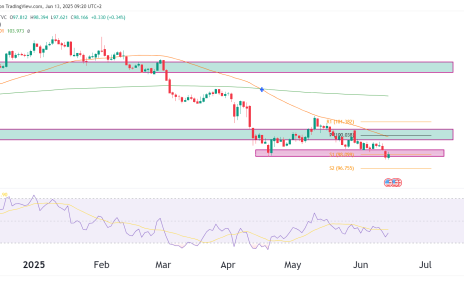- The US added 353,000 jobs last month, beating market expectations for an additional 180,000 jobs.
- The probability of a March rate cut fell to 21% from 38% on Thursday.
- On Friday, stocks of regional banks rebounded slightly, pushing yields higher.
Friday was a down day for currency futures as the dollar rallied to a seven-week high after upbeat employment data. Investors were surprised after the US non-farm payroll figures were much higher than expected. As a result, there is an even lower chance that the Fed will start cutting rates in March.
US jobs (Source: Bureau of Labor Statistics)
The US released yet another positive report on employment on Friday, which showed an addition of 353,000 jobs last month. This figure was much higher than what investors had expected. Just like in previous months, investors were left surprised at the strength of the economy despite high interest rates.
The employment report also showed the US unemployment rate holding steady at 3.7%, below market expectations.
After the report, market participants lowered expectations for the total number of Fed rate cuts this year. If the Fed does not do much to lower the high rates, the dollar will likely remain strong, which is bad for currency futures.
Since the year began, the likelihood of a rate cut in March has gradually fallen because of the resilience of the US economy. As the March rate cut bets fell, those for May went up sharply. However, after the most recent jobs report, bets for May are also declining.
According to the CME FedWatch Tool, the probability of a March rate cut fell to 21% from 38% on Thursday. At the same time, the probability of a May rate cut fell to 75% from 94%.
Currency futures like the euro, pound, yen, Aussie and Canadian dollar all fell as the dollar rose.
Before the jobs rally, the dollar had weakened despite Fed Chair Jerome Powell’s message on Wednesday that a March rate cut was unlikely. The decline came as Treasury yields fell due to concerns about the US banking sector.
Last year, the banking crisis caused a lot of volatility in the market and a rush to safe havens like bonds. Therefore, investors are keen on any signs of a similar crisis and they run to safety at the smallest provocation. However, this all changed on Friday as stocks of regional banks rebounded slightly, pushing yields higher.


